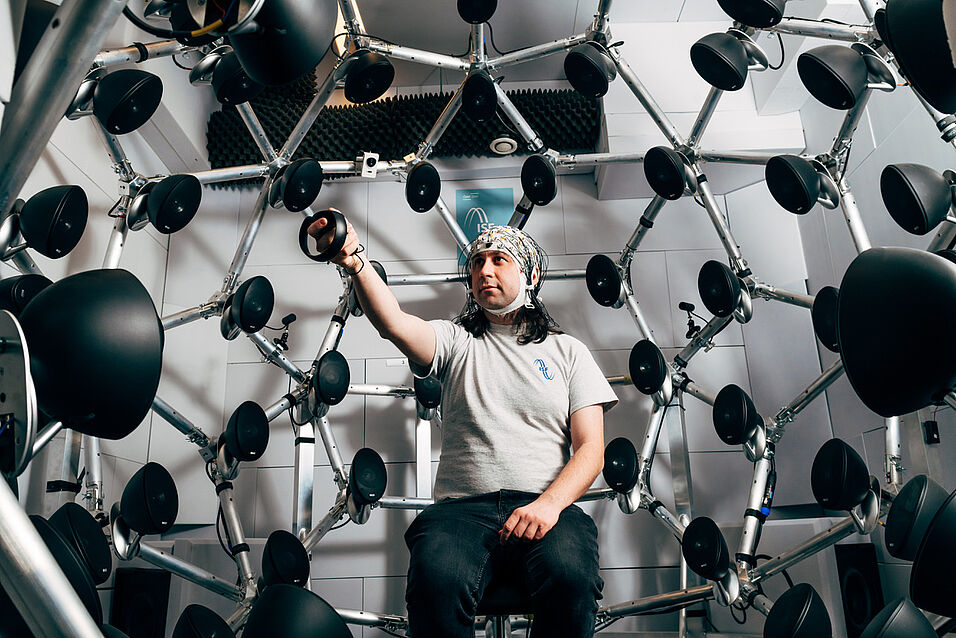Imagine yourself navigating through busy traffic, with cars, bikes and pedestrians moving around you in all directions. In this and many other situations, one of the crucial aspects for survival is accurately determining when and where external events are appearing, and whether and how things move. To allow both fast and accurate responses to external events, the brain continuously generates predictions about the future. For example, your brain predicts where a car will be by the time you want to cross the road. Yet, humans are not the only species for whom it is beneficial to predict the location and timing of sounds. Other primates might share these abilities, as they also need to navigate dense forest areas. To which degree recent evolutionary pressures have shaped human abilities in these contexts is unclear today.
Furthermore, ambiguities in the sensory environment, due to noise or uncertainty about the source properties, require the brain to generate several co-existing predictions and make decisions among them. To date, most of the existing knowledge about perceptual decision making comes from studying visual tasks. However, very little is known regarding this process in the auditory modality, which serves at least as important functions for survival and social behaviour.
The Young Independent Researcher Group Dynamates aims to address those current key challenges in auditory cognition, by empirically testing and modelling the sensory prediction mechanisms in comparison across evolutionarily closely related species and in realistic but highly controllable virtual acoustic environments. Importantly, in humans, these mechanisms will also be investigated on a physiological level by means of high-density electroencephalography (EEG) allowing to examine whether the resulting model complies with biological restrictions on neural computation. Hence, this project rests on a strong collaboration between cognitive neuroscience, cognitive biology, and computational modelling. To this end, Dynamates comprises an interdisciplinary research team consisting of experts in the fields of computational neuroscience and psychoacoustics (Robert Baumgartner), human EEG and sensory processing (Ulrich Pomper), and comparative cognition between animal species (Michelle Spierings).

